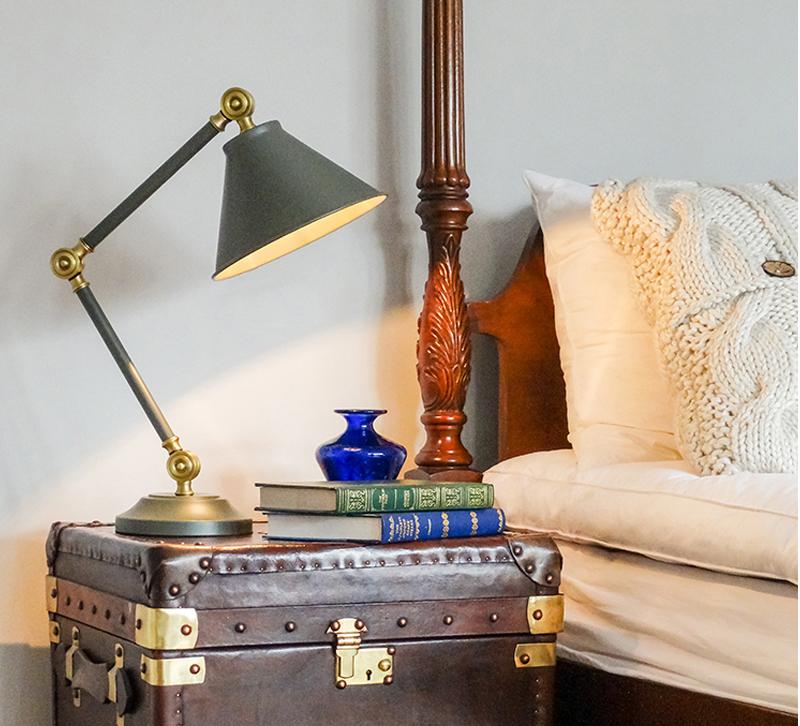By 2036, one in five people in the U.S. will be over the age of 65, according to the Harvard Joint Center for Housing Studies.
As Baby Boomers begin to exit the workforce and retire, retailers and designers have shifted their focus to help this generation with aging-in-place, the term used to describe "the act of remaining in our homes and communities as we get older, as opposed to moving in with family or entering a nursing home or assisted living facility." But a new study from HomeAdvisor says the term aging-in-place carries some baggage.
In the 2017 Aging-in-Place report, Aging in Place Starts With Holistic Home Improvement, University of Notre Dame’s School of Architecture Adjunct Associate Professor Marianne Cusato found that contrary to previous HomeAdvisor reports, homeowners ages 55-75 and 75 and above are completing home projects that put "ease of living improvements ahead of aesthetics in their approach to home projects."
But they're not calling it aging-in-place. Only 43 percent of responders ages 55-75 had heard of the phrase, and 52 percent of responders ages 75 and up had heard it.
Here are the important takeaways from HomeAdvisor's annual survey — and why it may be time to change phrasing.
Aging-in-place is gradual
If you're unfamiliar with the term, you might assume aging-in-place starts with a wheelchair ramp and ends with a motorized chair that takes the homeowner up and down the stairs, but HomeAdvisor's survey shows that it actually starts with more general home repairs.
Aging-in-place really starts with repairs around the home, typically done when the homeowner is between the ages of 55 and 75. The idea is to prevent future disasters and make the home more slightly more accessible before the homeowner really needs it. This can be anything from repairing windows, sidewalks and roofs to installing self-cleaning gutters and smart home technology.
For retailers and designers, this means you can be part of creating that sturdy foundation by offering products and advice that will facilitate aging-in-place. If you aren't already talking about smart home technology with your clients, this is a great way to introduce them to its benefits and how their lives may be easier down the road.
Lighting showrooms, especially, should be discussing dimmable lighting and task lighting. As people age, they need more light at night in order to read or do simple tasks. Portable table and floor lamps with USB ports can add extra light when needed and make it easier to plug in phone chargers.
Furniture showrooms also might consider offering more unique storage products that can be at ground level. As homeowners age, they may not be able to use a step ladder to access parts of their closets. Products like ottomans, consoles and dressers provide plenty of storage at lower heights.
What's more, these lighting and furniture options don't scream "I'm old!" but they do promote ease of living for any age group.
Aging-in-place influencers
The reason younger Boomers ages 55-75 are starting to look at aging-in-place home projects (even if they're not using that exact term) comes directly from watching their parents, siblings, friends and other relations struggle to age in place. Three in five homeowners ages 55-75 said witnessing these struggles changed how they felt about their own homes and mobility. In short, it got them thinking about the future — sort of.
"Interestingly, many homeowners indicated that while they see a clear need to prepare their homes for aging in place as a result of watching others, they do not consider themselves old enough to warrant immediate changes," Cusato says in her report.
Not surprisingly, homeowners don't want to consider themselves old, and really, they shouldn't. Improvements in healthcare and society in general have led to longer lifespans for most Americans.
The problem, however, is that health problems can crop up unexpectedly, and injuries that once may have been minor, such as falling off a step ladder, can lead to hospital visits and sudden losses of mobility. Unless they have crystal balls, most homeowners can't know how their health will change in the next few years or decades, but by positing some changes as ease of living, they may be more receptive to smart technology, accessible design and storage solutions that will make a big impact in their lives immediately and in the future.
Do we call it aging-in-place?
So why all the hype around what essentially boils down to phrasing?
The fact is no one wants to admit that they're getting older or think about when they might not be able to walk comfortably around their homes. Both aging-in-place and accessibility seem to have negative connotations with consumers, and if you're using those terms, you might turn them off.
There's also a digital factor here. If you're posting about aging-in-place on your website, you might be missing out on traffic. HomeAdvisor's research shows that the term is more industry jargon than common knowledge, so if you're targeting localized keywords like "aging-in-place Chicago" or "aging-in-place Minneapolis," you might be missing your audience because they aren't using the same keywords in their searches.
Instead, try using ease-of-living. It's about making life easier, which is something homeowners of all ages can gravitate towards.
To read more about this study, check it out here. Tell us what you think about it in the comments below!







